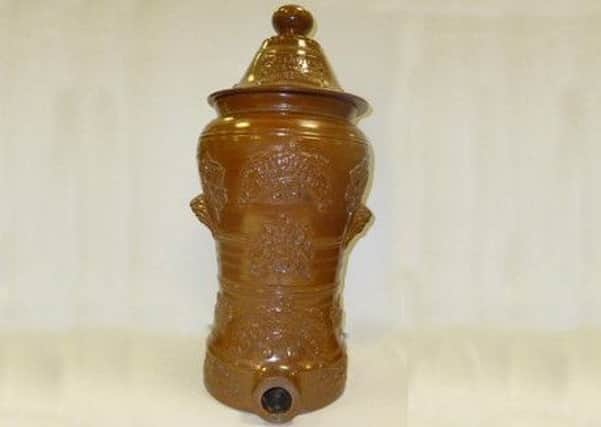Exhibit of the Week: Water filter, Woodhams Stone Collection, Malton


Clear, good or ‘sweet’ water was always highly valued and there were many attempts in the past to make dirty water drinkable. Ancient sources list methods such as boiling, heating in the sun and filtering water through sand and coarse gravel. The Greek physician Hippocrates filtered water for his patients using a cloth bag and poured boiled water through the bag to remove any deposits.
Various items were also added to water in an attempt to make it cleaner and taste better – these included laurel, barley, and even coral. But filtration, usually using sand and /or gravel, gradually became the most accepted method.
Advertisement
Hide AdAdvertisement
Hide AdIn 1827, in London, Henry Doulton developed gravity fed ceramic filters that fed into pottery water containers. At this time the River Thames in London was heavily contaminated with raw sewage, and cholera and typhoid epidemics were common. However, a link between the two was not demonstrated until John Snow showed that they were connected. He recommended in 1849 that water should be “filtered and boiled before it was used”.
In 1884, Charles Chamberland, a French microbiologist working with Louis Pasteur, developed a new porcelain filter with pores smaller than the micro-organisms they now knew were in the water. In 1906, Doulton introduced a similar filter in the UK which was soon being used in homes, hospitals and laboratories throughout the world.
This water filter in the Woodhams Stone Collection is typical of those used in the late 19th century. It was manufactured by T Elliott and Company in Manchester, a city where there were great problems with the provision of a clean water supply. It is made of brown salt glazed stoneware and the body of the filter is decorated with sprigging showing baskets of flowers and other foliate motifs. The filter itself was made of activated charcoal, or, as the company put it, it was a “Self Cleansing Carbon Filter”. Carbon absorbs the impurities present in water making it much safer to drink. Carbon filters are still used in water filters today.
Although the water filter was made in Manchester it would have been very useful in the Malton and Norton area. The need for such devices is clear from the incidents of cholera and typhoid that occurred locally throughout the 19th and 20th centuries.
Although these filters were not total solutions to the problem, they were certainly effective, and similar filters are still extremely important for many people in the world today.